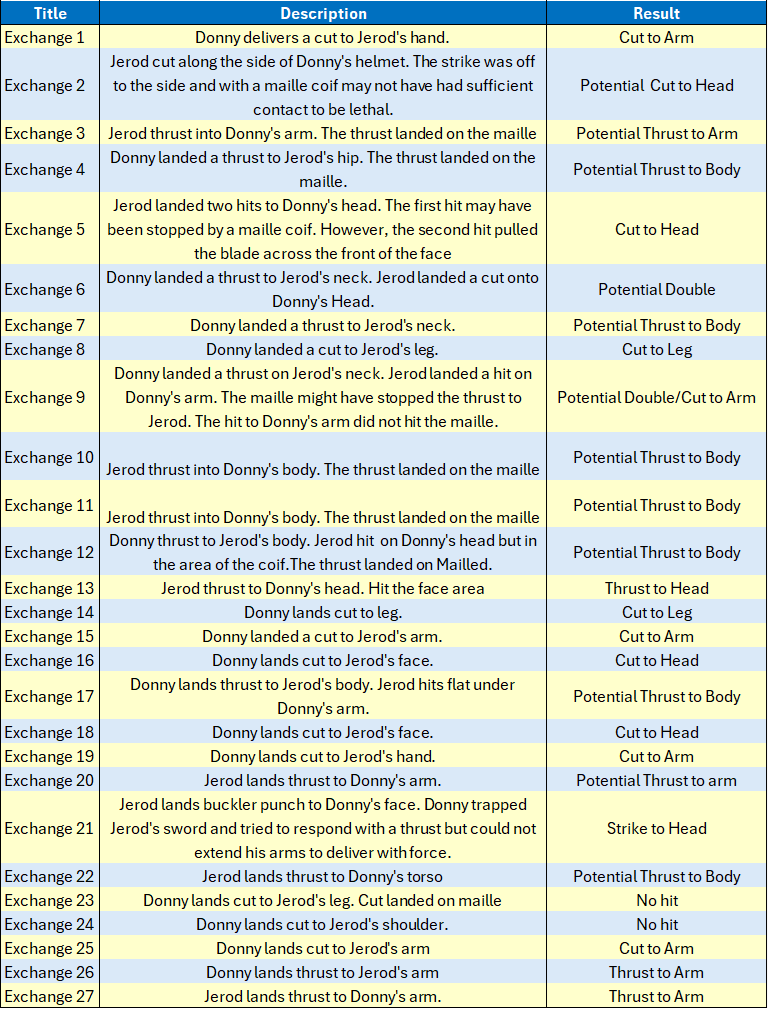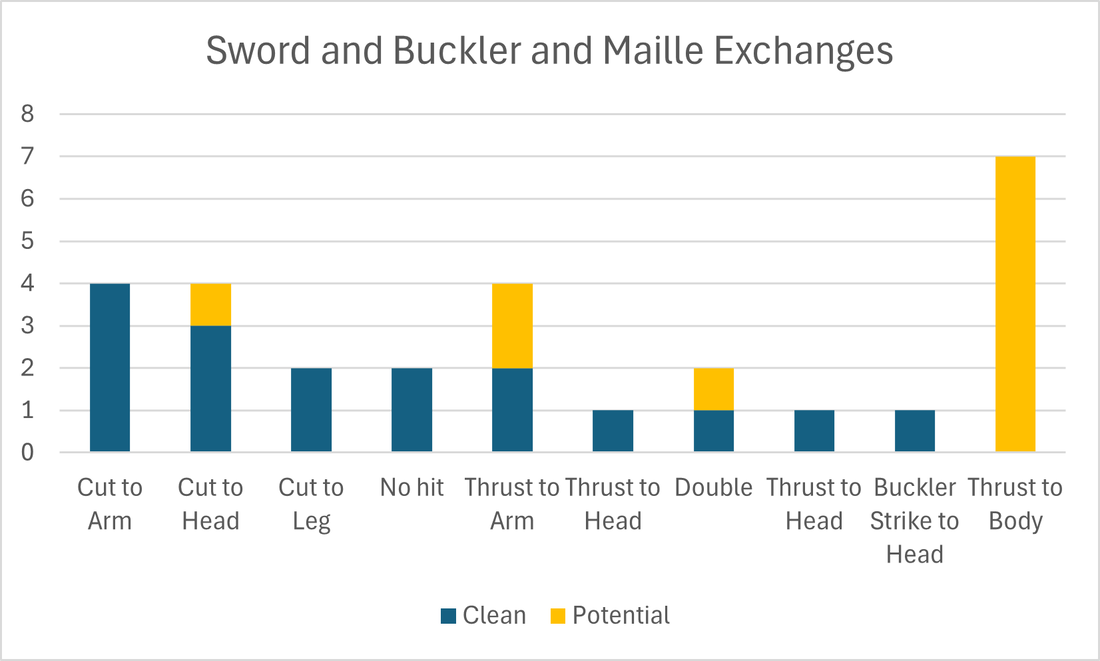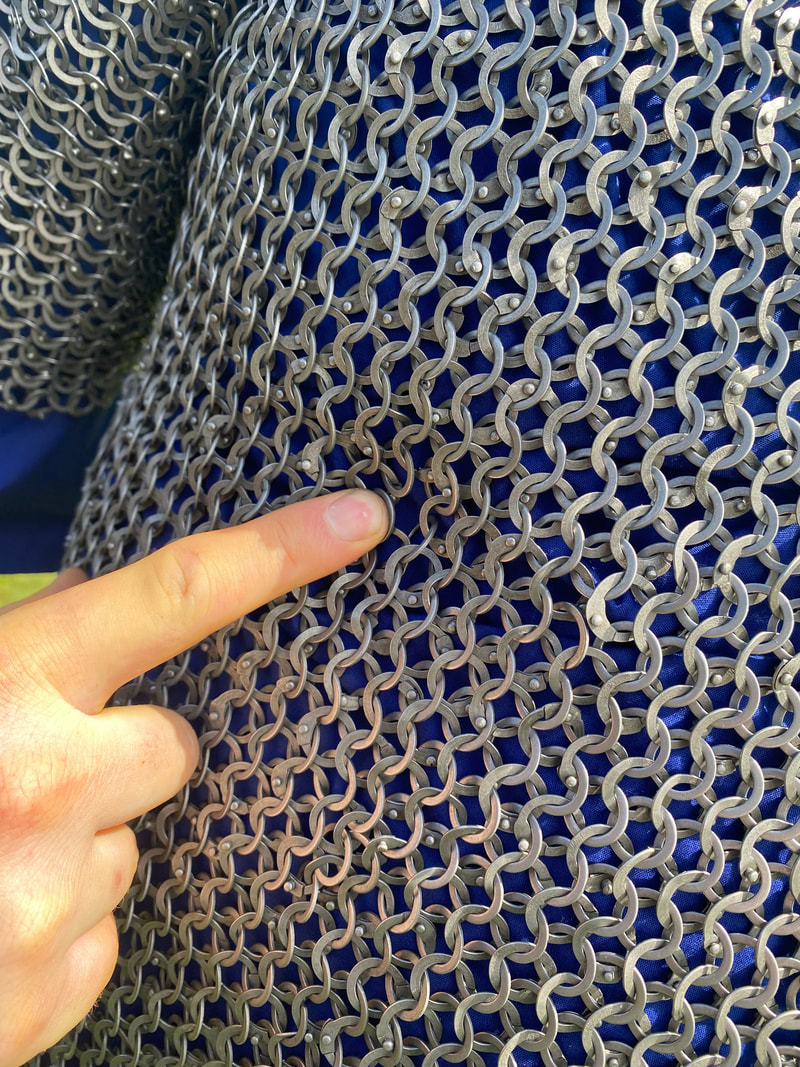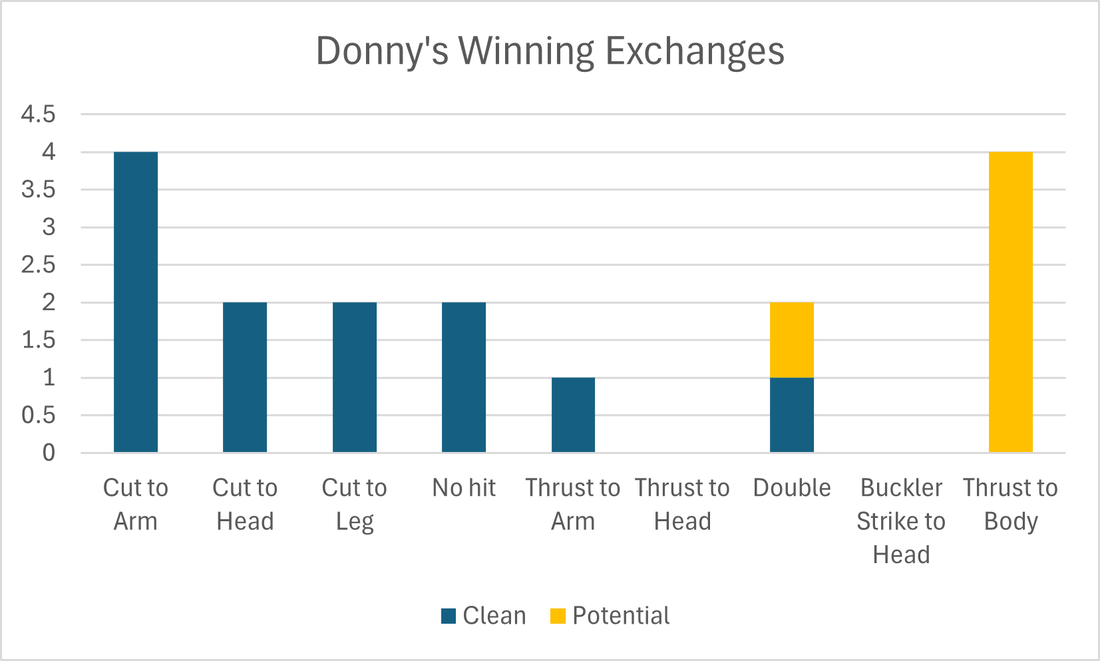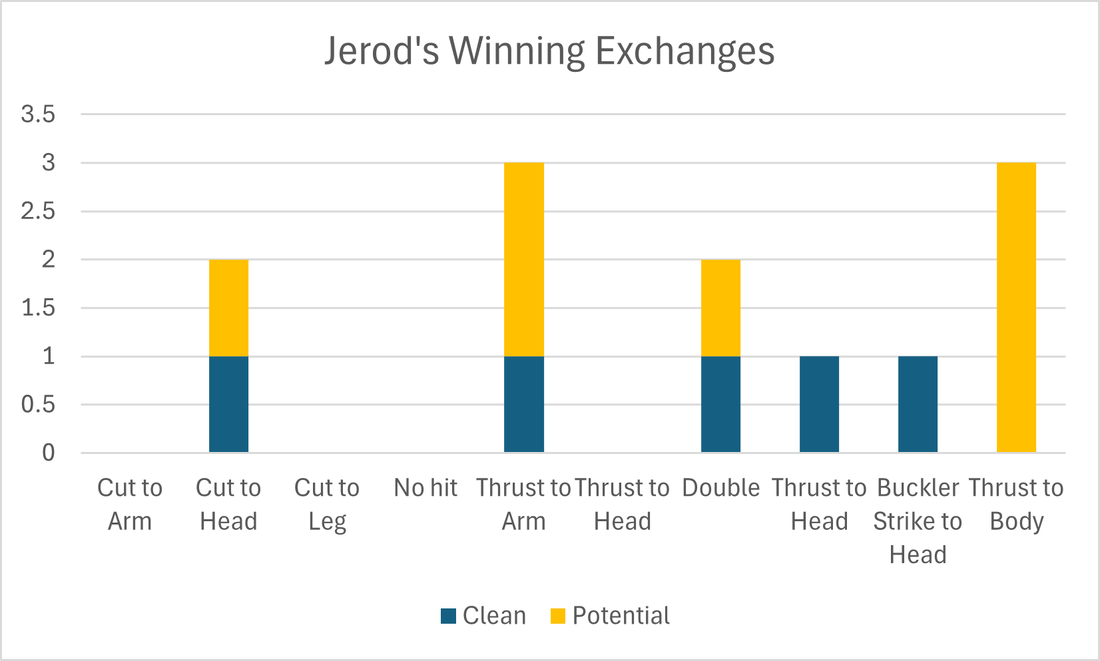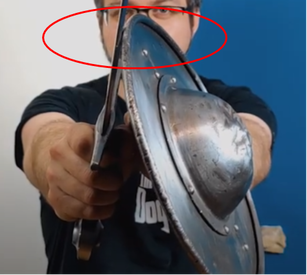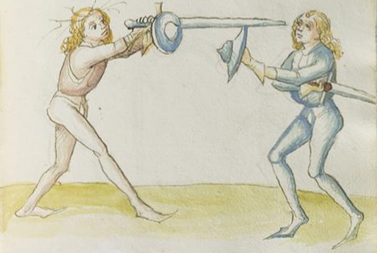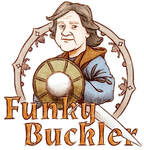|
In the HEMA community, sword and buckler are viewed as unarmored weapon sets, and while this is largely true, it is not the complete picture. Manuscript examples showcase several soldiers wearing different levels of armor while being armed with swords and bucklers. So, this begs the question, how does wearing maille change a sword and buckler fight? Roland Warzecha, based on his analysis of manuscripts featuring armor and sword and buckler, stated that he did not see any indication of specialized armored fencing systems that would fundamentally differ from fighting out of armor in the age of maille. Today, Jerod and I will be putting this hypothesis to the test. Summary of ExchangesOverall, we had 27 exchanges in this experiment, with a variety of results. The exchanges are summarized in the table below: After summarizing the exchanges, the results were grouped into categories to see the overall targets. Potential results were strikes against the maille. We cannot say whether the thrusts against the maille would penetrate the armor to defeat our opponent. With a layer of maille and a layer of gambeson, it is possible that the armor would have prevented some of those thrusts from injuring the fencer. Quality of the maille, damage received previously to the armor, the geometry of the sword, and force of the thrust all factor into whether the potential hits would have ended the fight. It is also worth noting that while we did not treat cuts to maille as hits in an exchange and continued fighting, there is an art that depicts maille being cut through in combat. During our exchanges, some rings were broken which adds evidence that the maille was beatable with thrusts. ObservationsWhen looking at the exchanges based on fencer, it becomes clearer the strategies each fencer used. Jerod generally favored the thrust, particularly on the opening action of an exchange. In many cases, he was able to connect with a thrust. Donny, on the other hand, seemed to still use cuts which benefited him when targeting the limbs. However, it is worth noting that cuts to the leg were not a valid target for Jerod because of Donny’s leg armor. This could be evidence that the more maille a fencer is wearing, the less likely their opponent is to cut. Jerod noted that with the extra armor, thrusting without our sword and buckler hands close seemed less risky than when we fought without armor. However, all of the cuts to the arm were delivered against Jerod, possibly indicating that his arm was not as safe as he thought when his hands were separated. Based on the spread of exchange-ending hits, it does not seem maille alone impacted our fencing strategies. The limbs, head, and body were all targeted throughout the exchanges. While there were several occasions where a cut landed on the maille (which did not stop the exchange), which set up new attacks, this seemed to be similar to when one fencer goes to deliver an attack that fails to connect. There were also more blade grabs than in unarmored exchanges, but this setup of follow-up strikes is similar to buckler-strikes. One type of attack did dominate the exchanges. Thrust to the torso became much more prevalent than Jerod, and I usually see in our exchanges. Jerod noted that he delivered opening thrusts more than he normally does in the armor. This is likely because the torso, being the most significant target area, and the other regions protected by armor became a more opportune target than limbs, which are more commonly hit in our exchanges. Interestingly enough, this emphasized our I.33 technique because keeping our sword and buckler hands close protected our torso and helped us set up thrusts more easily. On top of that, with the extra armor, thrusting without our sword and buckler hands close seemed less risky than when we fought without armor. Closing ThoughtsBased on our results, I believe Warzecha’s hypothesis that maille did not warrant special techniques and systems is plausible. The true advantage of maille is reducing the likelihood of a strike debilitating the combatant. However, because the armor can still be beaten, fencers must still avoid strikes when possible. Both Jerod and I’s doubles came early when we acted as if we were invulnerable because of the armor. This approach only resulted in two dead idiots. Once we settled in and started using more technique, the exchanges were much cleaner. However, maille alone is not the only armor shown in art paired with sword and buckler. That is an experiment for another day.
0 Comments
When studying Historical European Martial Arts, there will come a time when you will be told to “watch your edge alignment” or that “your hit was flat”. People may even go as far to point out that your sword is not a lightsaber and cannot just cut through things on contact. But why is this such an important concept when learning swordsmanship? Today, we will be exploring how attacking targets with sharp swords can improve your technique and also help your interpretation of a given system. Just to be clear, this is an exploration of using swords against targets such as tatami mats and water bottles, not friends. Do not use sharp swords against other people. I consider myself a novice when it comes to cutting with sharp swords. At best, I am a backyard amateur. However, there are incredibly smart and well-practiced individuals willing to help you get started with sharp swords. Brittany of Mordhau Historical Combat, a well-accomplished competitive sharp sword wielder, recommended Michael Edelson’s Cutting with the Medieval Sword. While the book primarily focuses on longswords, the general advice and science behind cutting with a sword is applicable to all bladed weapons. This was a great starting point for me and helped me focus on the technique that mattered. Another helpful resource was the Sword Buyer’s Guide, which helped me with the dos and don’ts of buying swords online. Safety WarningWielding a sharp sword requires utmost caution and respect for the weapon's potential danger. Before engaging in any practice or demonstration, ensure you have received proper training from a qualified instructor. Always handle the sword with care, keeping it pointed away from yourself and others. When practicing strikes or maneuvers, maintain a clear and controlled environment, free from obstacles or bystanders. Never perform techniques beyond your skill level or attempt reckless stunts. Inspect the sword regularly for any signs of damage or wear, and never use a blade that is compromised in any way. Remember, the sharpness of the sword demands the utmost respect and responsibility. Failure to adhere to safety precautions may result in serious injury or harm. Swordplay is a disciplined art, and safety should always be your top priority. Learning How Swords WorkSharps swords can be useful tools to teach fencers the why behind emphasized-technique in HEMA, such as edge-alignment. Swords are designed to cut and thrust and are agile weapons. However, for the sword to be fully utilized, form and technique must be factored in. Edge alignment, blade motion, body mechanics all become highlighted when trying to attack a target with a sharp sword. In HEMA, the term “baseball swinging” gets thrown around when a fencer drops their shoulder and swings the sword like a baseball bat. While this can generate a lot of force, the truth is that swords do not have the mass distribution for this attack to effectively cut. Using a sharp sword on a target will quickly highlight the issue with these types of swings as the target receives minimal damage. Improving InterpretationAnother advantageous use of sharp swords is the improvement in interpretation. When interpreting systems, it is always important to ask if a technique is functioning as we expect. Using sharp swords and targets can help instructors visualize the lethality of a technique when it is performed. It also can help instructors understand what attacks are a threat instead of more incidental strikes. One of the better examples is when a sword is deflected low and is brought to make contact using a short distance to contact the opponent’s leg. Because the original attack lost its power and the structure is broken, the attack to the leg (depending on distance traveled and other factors) may not be effective. These are the types of actions that can be explored with sharp swords. With that in mind, let’s look at a few attacks in I.33 with a sharp sword! Other I.33 scholars have also joined in on the use of sharps to improve technique. Aegis Historical Combat did a great short clip on Instagram highlighting the effectiveness of the sturtzhau from halfshield. Closing ThoughtsImproving technique and interpretation are ultimately the second and third reasons to attack targets with sharp swords. The number one reason is because it is fun. Swords are unique weapons, and we all realize how fun they are (otherwise, you likely would not be reading this blog today). So, let’s close out by watching videos highlighting experienced swordsmen cutting targets with arming swords! Borislav Krustev posted a video back in 2022 discussing myths in sword and buckler combat that he believes stem from the I.33 manuscript. In today’s post, I will discuss my thoughts on his points. Overall, I believe his critiques come from a point of view that anything not included in I.33 is wrong in the wider context of sword and buckler combat. In general, I believe that many systems with all weapons have their merit and just highlight different points of emphasis for techniques between sources. An Important DisclaimerIn general, I have a tremendous amount of respect for HEMA scholars who present their arguments in polite and professional ways. I have had the opportunity to discuss I.33 with Krustev, and while we do not agree on all things regarding I.33, I respect his opinions and the examples he uses as evidence. I plan to use blog posts like these to spotlight different opinions regarding I.33 to help the reader come to their own conclusions. Krustev’s First Myth: The Correct Sword in I.33 is the Type XIVIn the video, Krustev first argues against the idea that the type XIV is the correct sword for I.33. I agree with Krustev’s assessment that the type XIV sword is not the sword of I.33. As discussed in my post analyzing the different swords that could have been used in I.33, several different typologies could be featured in the art. To Krustev’s point, these terminologies are modern and not what was used in the early 14th century. I have heard some I.33 scholars claim that the type XIV is the best type of arming sword for the I.33 system because the broad shape and shorter blade effectively allow for binding and attacks from the bind. While I enjoy using a type XIV when training, it is not the only type of arming sword for the system. I have used type XV swords and type XVI swords as well and have not found the techniques to be impacted. The ability to execute I.33 techniques with a given sword is subjective to the fencer and even with historical examples, there is quite a large variety of options for fencers when studying I.33. Krustev’s Second Myth: Leg Hits are Ineffective and Easy to CounterKrustev’s second sword and buckler myth that he challenges is that leg hits are ineffective and quickly countered. Based on my interpretation of I.33, I do not believe I.33 utilizes leg attacks. The first play of the manuscript advises the fencer not to attack the legs. Later, in the ninth play, an attack to the right or left can be performed, but the target is not specified. In practice, these could be leg attacks in I.33, but this is not definitive evidence. However, just because I.33 does not showcase this type of attack does not mean they are ineffective. To that point, I agree with Krustev. Andre Lignitzer and other sword and buckler systems feature leg attacks, which is evidence of their effectiveness. Furthermore, single-handed sword systems without the buckler also include leg attacks. So, even without a buckler, leg attacks are utilized. Given the leg attack being featured in other systems, it does not appear to be easily countered either if set up properly. What I believe is universally true in swordsmanship is the riskiness of leg attacks, particularly as an opening action, as warned against in I.33. Whenever the sword is attacking low, it is not protecting high. The assistance of the buckler may add some risk reduction during this attack, but the risk of doubling or just being hit outright is still a concern. Perhaps the minds behind I.33 were so concerned with this risk that they chose to opt out of this attack entirely when attacking. Nevertheless, the effectiveness of the leg attack is perfectly valid, albeit risky, as Krustev also states. Krustev’s Third Myth: The Buckler is Covering the Sword HandIn his last point, Krustev challenges the idea that the buckler needs to cover the sword hand. He particularly focuses on the flattening of the buckler while the hands are practically touching. I agree with him to the point that having the sword and buckler hands separate is an effective fighting style. After all, according to I.33, all fencers use the seven common wards, which implies that those positions can be fought from effectively. Krustev also highlights that it is true that when the buckler is extended forward, the buckler does protect the hand. Where Krustev and I begin to diverge is in the use of the sword and buckler hands close together and the flattening of the buckler. In I.33, the techniques intend to have the sword and buckler hands nearly touching, practically wrist to wrist. To do this, the buckler does flatten. Krustev argues that there is a more effective position where the buckler is slightly angled forward and to the side that covers the hands than flattening the buckler commonly seen by I.33 scholars. However, I would argue that the more critical area of coverage and contact point is where the buckler touches the blade of the sword, shown below: The main reason for this is that during binding actions, generally the sword is angled forward into longpoint, not perfectly vertical as shown in halfshield. This means that the contact point highlighted above is facing the opponent and covering areas a sword may slide down during the bind. The idea that this position while in halfshield does not protect the hand is even discussed in the manuscript. I.33 includes a play where a common fencer believes they can separate the sword and buckler of the I.33 fencer's hands while in halfshield. The counter to this strong cut is to turn the sword and buckler hands, then enter with an attack similar to a parry and a riposte. I believe this play highlights how the sword is still the primary offense and defense while the buckler is primarily focused on allowing the sword to stay extended. The fact that halfshield starts with the hand more exposed with a flattened buckler is more to set up the following actions than it is to protect the hands. Now with that said, the position where the buckler is flat towards the opponent does appear in the Cluny Fechtbuch as shown in the example below: If the Cluny Fechtbuch is illustrating the Andre Lignitzer plays, then it is reasonable to assume that the buckler facing forward as during binding actions Krustev describes is valid from a historical perspective. While I do not believe I.33 uses this positioning, I believe that both are valid and used to support different techniques with the sword. Closing ThoughtsI believe Krustev’s biggest criticism of I.33 is that it does not include techniques from other systems. If taken to the extreme, I.33 scholars may make the mistake of thinking that only the techniques of I.33 are effective, even if other systems state the contrary. In swordsmanship, the end goal is to hit the opponent without getting hit. If you do an action that is not explicitly in the source you study, but you hit the opponent without getting hit, you did something right.
Given the source material of I.33, I cannot say definitely that the minds behind the manuscript would advise fencers to attack the legs or to attack with the sword and buckler separately. Nevertheless, these are essential parts of generic sword and buckler combat and likely something the authors of I.33 had to consider when making their manuscript. I have my opinions on what I believe I.33 would do to counter those techniques, but that is a story for another day. And with that, I would like to thank Borislav Krustev for taking the time to create his video. Commentaries like this are important when HEMA scholars compare and discuss techniques and different sources. It is no secret that I am a fan of the techniques of I.33, but it is important to listen to the critics of the systems to find potential gaps or vulnerabilities. Through their critiques, we can all move towards refining our interpretations and moving closer to correctly interpreting the sources. |
Proudly powered by Weebly
